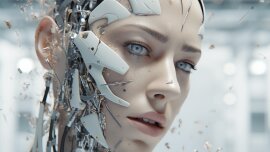Ukrainian-born PhD student at the Swiss EPFL University, Bogdan Kulinich, has proven the bias of Twitter’s photo editing algorithms.

Twitter’s image cropping algorithm was found to favor younger, slender faces with lighter skin.
This finding, while negatively affecting the company, which has previously apologized to users after reporting bias, marks the successful completion of Twitter’s first-ever “algorithmic error” award.
The company paid for this finding $3,500.
Kulinich proved the bias by first artificially generating faces with different characteristics and then skipping them through Twitter’s cropping algorithm to see what the software is targeting.
Since the faces were themselves artificial, it was possible to create faces that were nearly identical, but at different points in the spectrum of skin tone, width, gender, or age – and thus demonstrated that the algorithm focused on younger, slender, and lighter faces.
“When we think about bias in our models, it’s not just academic or experimental… but how it also works with our thinking in society,” Rumman Chowdhury, head of the AI ethics group at Twitter, said at the conference.
Twitter was criticized in 2020 for its image cropping algorithm after users noticed that it seemed to regularly focus on white faces – and even white dogs versus black ones.
The company initially apologized, saying, “Our team ran a bias test before submitting the model and found no evidence of racial or gender bias in our testing. But it’s clear from these examples that we need to do more analysis. ” However, in a more recent study, Twitter’s own researchers found a very mild bias in favor of white and female faces.
The controversy prompted the company to announce an award for the use of algorithmic protection against malicious errors, which promised thousands of dollars in prizes to researchers who could demonstrate the harmful results of the company’s image cropping algorithm.
Kulinich, the award winner, said he had mixed feelings about the competition.
“Algorithmic damage is not only about errors. It is important to note that many harmful technologies are not harmful because of accidents or unintentional mistakes, but because of their design. This happens by maximizing involvement and, in general, making a profit by transferring costs to others, ”the young scientist noted.
























